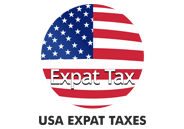As you navigate the intricate world of personal finance, one term that often sparks curiosity and confusion is the 401(k). This employer-sponsored retirement plan has become a cornerstone of many Americans’ long-term savings strategies, but how does it work from a tax perspective? In this blog post, we’ll demystify the 401(k) tax and explore its tax implications, empowering you to make informed decisions about your financial future.
At its core, a 401(k) plan is a tax-advantaged account that allows you to contribute a portion of your pre-tax income toward your retirement savings. This means that the money you contribute is deducted from your paycheck before it is taxed, lowering your overall taxable income for the year. By doing so, you essentially defer paying taxes on the contributed amount until you withdraw the funds during retirement.
also read: Is IRS Form 5329 Right for You?
One of the primary benefits of a 401(k) plan is the potential for tax-deferred growth. As your contributions and any employer-matched funds accumulate in the account, they have the opportunity to grow tax-free until you begin taking distributions. This tax-deferred compounding can significantly amplify the growth of your retirement nest egg over time.
However, it’s important to note that when you do eventually withdraw funds from your 401(k) during retirement, those distributions will be subject to ordinary income tax rates. This means that the money you take out will be treated as taxable income in the year you receive it.
Additionally, if you decide to withdraw funds from your 401(k) before reaching the age of 59 1/2, you may face an early withdrawal penalty in addition to regular income tax. This penalty is typically a hefty percentage of the withdrawn amount, serving as a deterrent against dipping into your retirement savings prematurely.
Employers often sweeten the deal by offering matching contributions, which can turbocharge your savings efforts. For example, if your employer matches your contributions up to a certain percentage of your salary, that’s essentially free money that can supercharge the growth of your 401(k) account.
It’s worth noting that there are contribution limits in place for 401(k) plans, set annually by the Internal Revenue Service (IRS). These limits help ensure that the tax benefits of these accounts are not abused and remain within reasonable bounds.
Beyond the tax advantages, a 401(k) plan offers several other benefits. Many plans provide a range of investment options, allowing you to diversify your portfolio and tailor your investment strategy to your risk tolerance and retirement goals. Additionally, some plans offer features like automatic enrollment and escalation, making it easier to consistently contribute to your retirement savings.
As with any financial decision, it’s crucial to carefully consider your specific circumstances and goals when evaluating the role of a 401(k) in your overall financial plan. Consulting with a qualified financial advisor can help you navigate the nuances and ensure that you maximize the tax benefits while aligning your retirement strategy with your long-term objectives.
In essence, the 401(k) is a powerful tool for building a secure retirement, offering tax-deferred growth, potential employer contributions, and a range of investment options. By understanding the tax implications and leveraging the benefits of this retirement vehicle, you can take proactive steps toward achieving your financial goals and securing a comfortable future.
